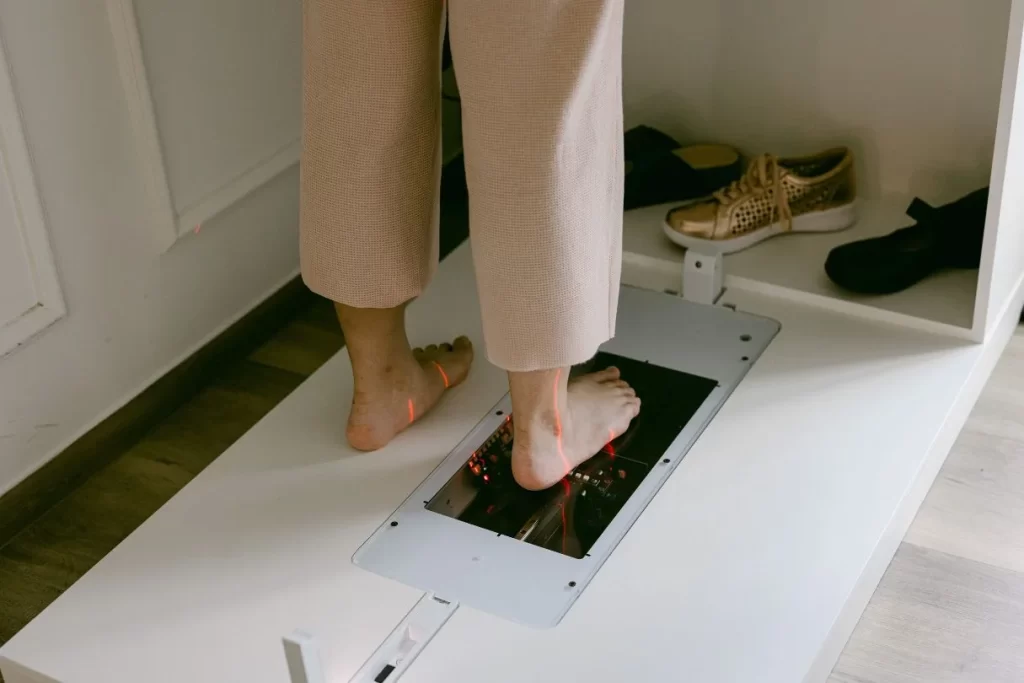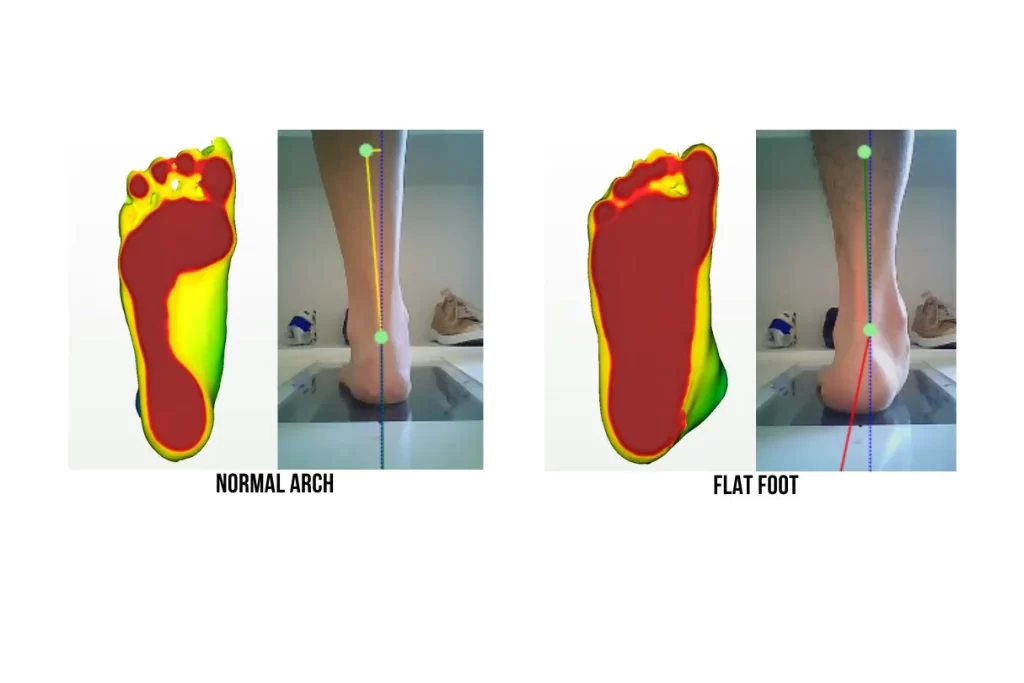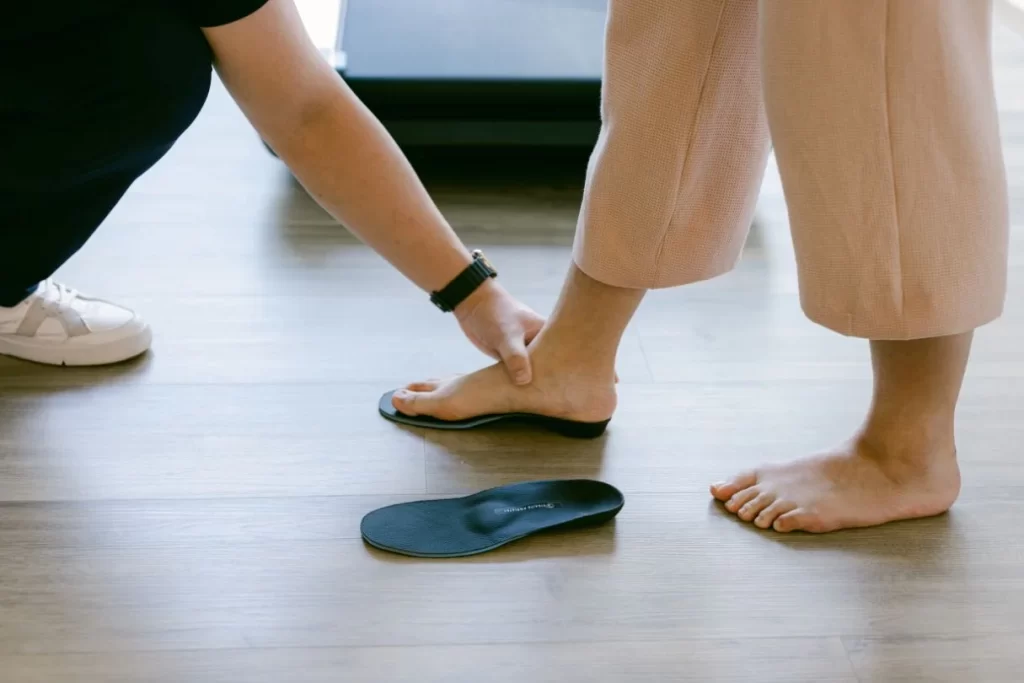条件>>
Flat feet, or medically termed as pes planus, is a condition where the arches of the feet are lower than normal or completely collapsed. In severe cases, the entire sole of the foot will completely touch the ground. Although many people with flat feet experience no symptoms, others may face significant discomfort and long-term complications. Flat feet with symptoms typically warrant treatment to manage the pain and prevent further complications.
Flat feet occur when the foot arch either does not develop properly or collapses over time. It is a common foot deformity condition seen in Asian countries. Flat feet in children (paediatric pes planus), especially infants and toddlers, can be normal as the arches typically develop during childhood. However, flat feet that persist into adulthood or develop later in life can lead to various foot and lower limb problems, including pain, fatigue, and difficulty walking.

The arch of the foot is a key player in foot biomechanics, as it acts as a structural stabiliser when you walk, run, and stand. It also helps distribute your weight across the entire foot like a tripod, and it helps transfer load effectively from the heel to the forefoot. When the arch collapses or fails to hold its shape, the foot functions change, and the gait pattern is affected. As the foot function directly affects the walking pattern, fallen arches can lead to potential problems up the lower limbs, including the feet, ankles, knees, and even the hips or lower back. Therefore, addressing flat feet early is essential to prevent injuries and maintain overall foot health and mobility.
A person can develop flat feet for various reasons, including:
There are four primary types of flat feet:

While some individuals with flat feet may not experience any symptoms, others may encounter various problems. Common symptoms include:
Treatment options to manage flat feet typically depend on the severity of the condition and the symptoms. Standard treatment options include:

In most cases, surgery is not necessary for treating flat feet. However, surgery may be beneficial if:
Common surgical procedures include tendon repair, realignment of the bones, or fusion of the joints in extreme cases. Surgery is usually considered a last resort when all other treatments have been exhausted.
If you experience pain, discomfort, or difficulty walking due to flat feet, it’s important to consult a podiatrist for an evaluation. A trained podiatrist will be able to differentiate the type of foot deformity, perform gait assessment, and recommend appropriate flat feet treatment options to help manage your concerns. You should see a podiatrist if:
Flat feet or pes planus can cause a range of issues, from mild discomfort to significant pain and functional limitations. Understanding the causes, symptoms, and treatment options available can help you manage the condition and prevent complications. If you’re experiencing symptoms or struggling with foot pain, don’t hesitate to seek help from a professional. At Straits Podiatry, our team of expert podiatrists is here to provide personalised care and support for all your foot health needs. Contact us today to schedule an appointment and get back on the path to healthy, pain-free feet.
相关文章
评估足弓是否正常有几种方法。您可以观察自己的脚印,检查鞋子的磨损模式,或者从脚跟背面观察。
脚印是评估足弓的最简单方法之一。正常的脚印在足弓处会有一个明显的凹形弧度。扁平足的人不会有凹形弧度,也可能是凸形。
A person with flat feet will have a medially distorted shoe upper, meaning the arch area bulges outwards. You will also notice that the heel counter starts to slant inwards. Excessive wear of the inner side of the sole is also a key sign.
理想的脚部姿势是脚跟位置垂直。扁平足患者的脚跟位置通常向内倾斜(形成三角形),而高足弓患者的脚跟位置可能向外倾斜(倒三角形)。
There are methods to correct flat feet permanently, the majority through surgical options. However, there are paediatric cases where the foot structure improves with the use of supramalleolar orthoses. Generally, conservative methods will no longer work once you reach adolescence or adulthood.
是的,扁平足可能是由于衰老、受伤或某些疾病等因素在晚年形成的。重要的是,要及早发现症状并寻求专业评估,以防止出现更多问题。
对于扁平足患者来说,具有良好足弓支撑、结构缓冲和中底稳定性的鞋是最好的选择。应选择专为支撑和减轻足部负担而设计的鞋类,并考虑咨询足病医生以获得个性化建议。
是的,扁平足可能会导致其他部位疼痛,如膝盖、臀部和下背部,这是由于足部力学改变和排列不当造成的。这些部位承受的额外压力会导致不适和疼痛。
如果处方和设计正确,定制矫形器会非常有效。设计矫形器的目的是提供个性化的支撑、矫正足部力学并减轻疼痛。许多人都发现,正确配戴矫形器能明显缓解疼痛。我们强烈建议您去看足病医生开足部矫形器处方,而不是去鞋店或矫形器技师那里。

海峡足科医院(布纳维斯塔)、
31 Rochester Drive,
#02-01 (Hotel Block)、
新加坡 138637
海峡足科医院(加东)、
i12 Katong, 112 East Coast Rd、
#03-01/02/03/04/28,
新加坡, 428802.
海峡足科医院(乌节)、
健威日本医疗
中心点
乌节路 176 号
#06-05,
新加坡, 238843